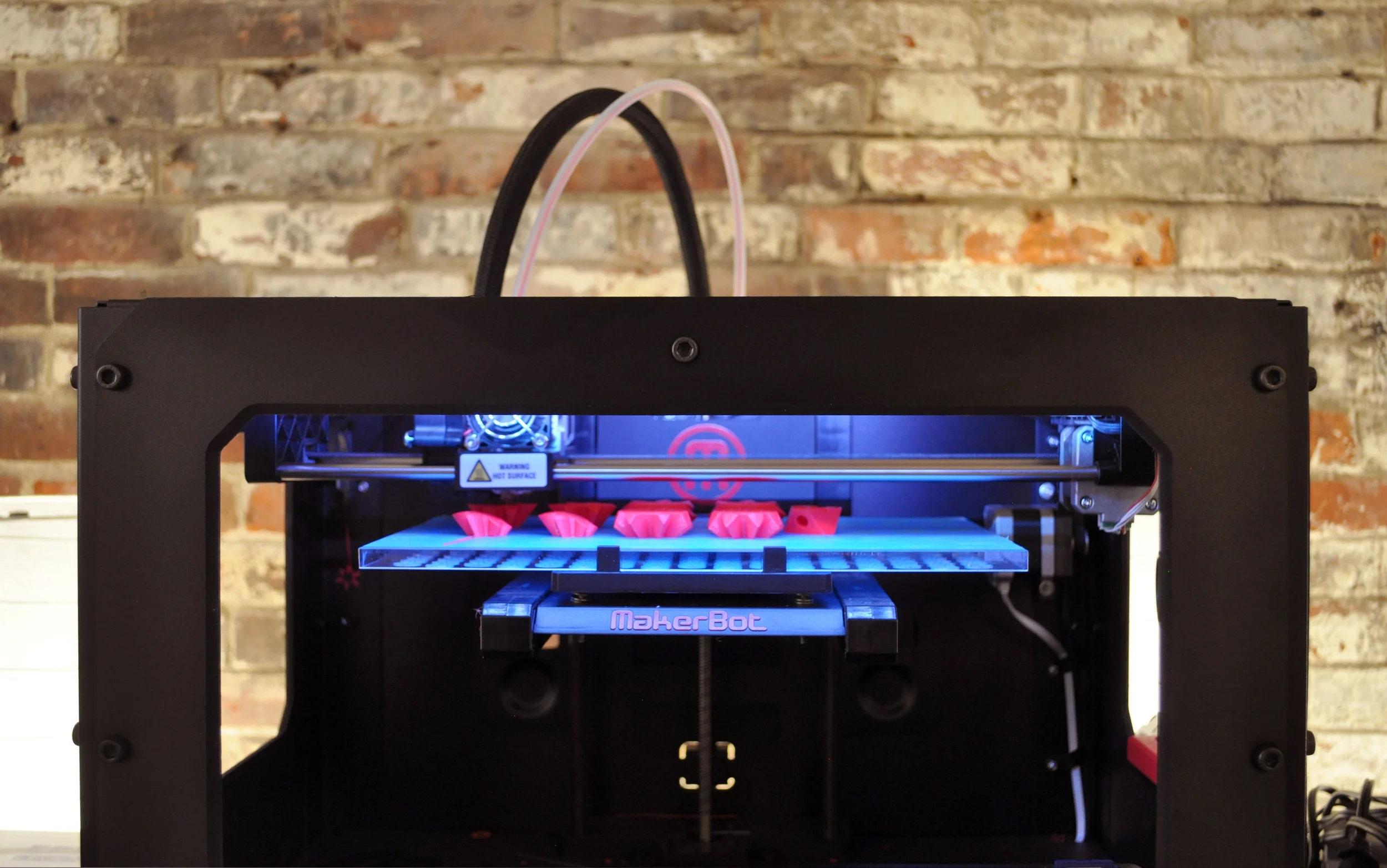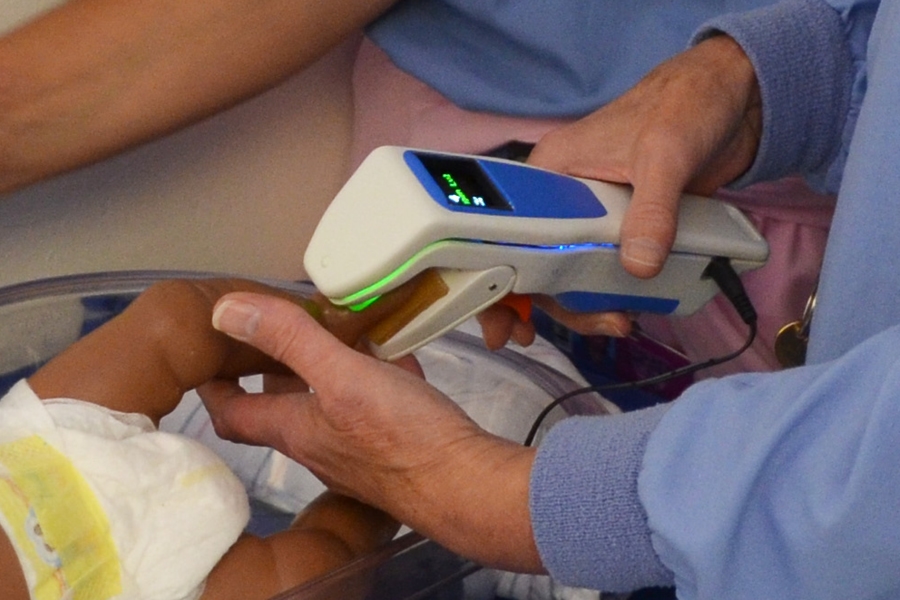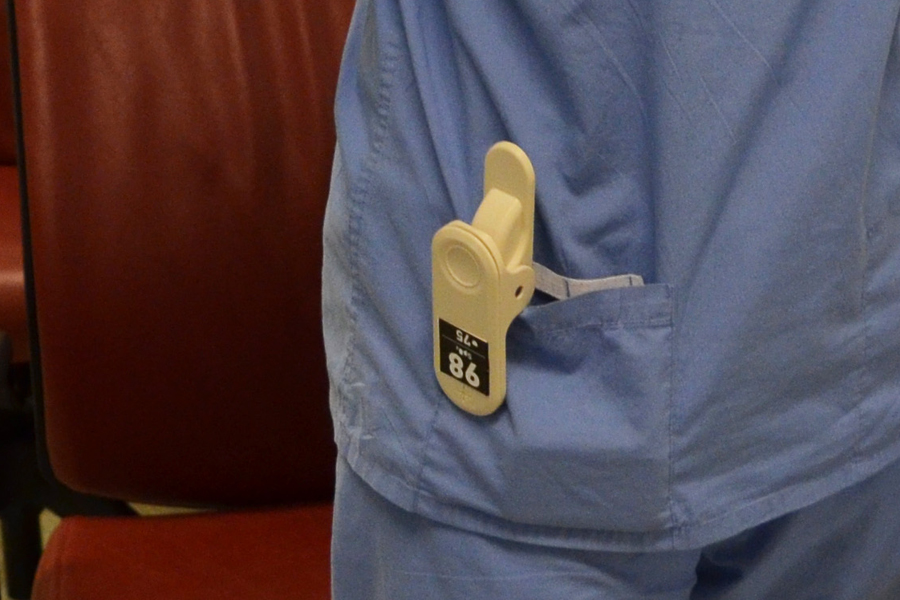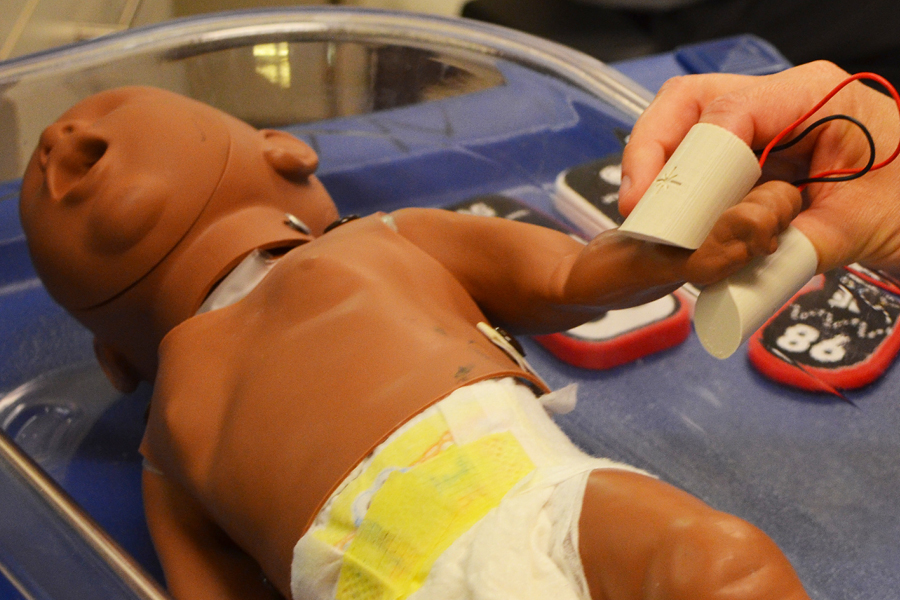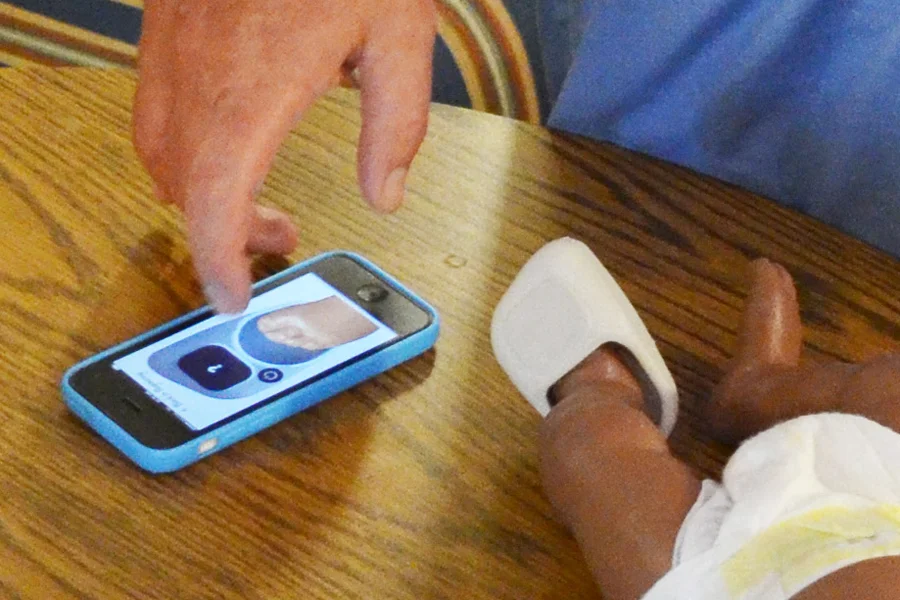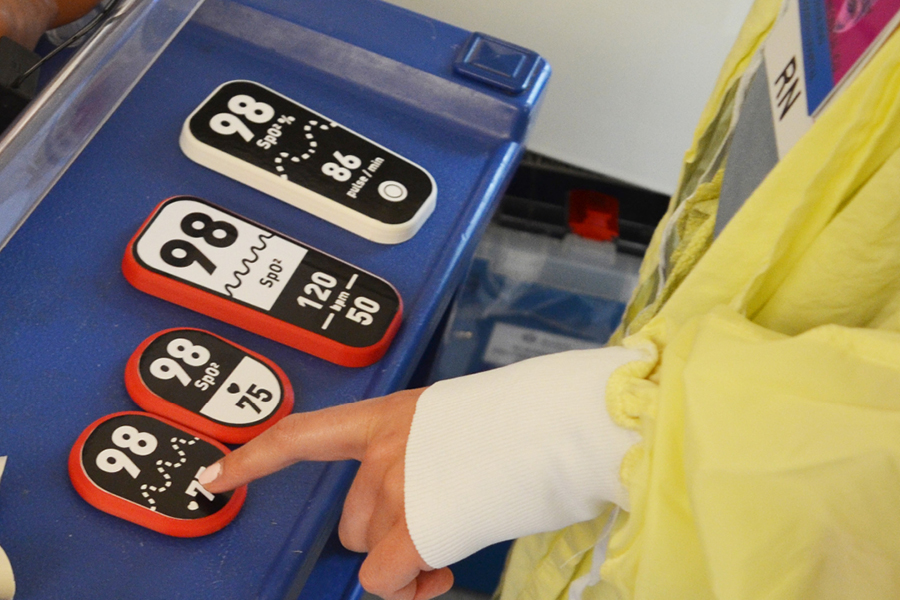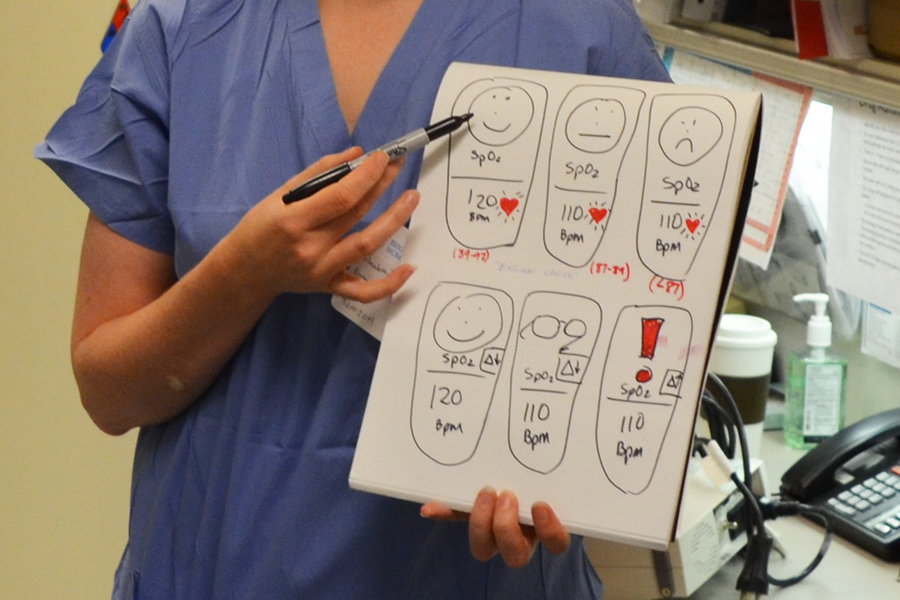The Design that Matters team just returned from an incredibly productive field research trip bringing our Pelican Newborn Pulse Oximeter prototypes to Haiti...
Partners in Health Hosts DtM and the Pelican Project at Three hospitals in Haiti
The Design that Matters team just returned from an incredibly productive field research trip bringing our Pelican Newborn Pulse Oximeter prototypes to Haiti. Our two gracious hosts for the trip were...
Firefly Goes to Haiti!
Firefly is now in Haiti! DtM's award-winning phototherapy device will be in use at two Haitian hospitals: Hôpital Universitaire de Mirebalais in Mirebalais, Haiti’s first teaching hospital built by Partners in Health, and...
Design that Matters Presents Pelican at SOLIDWORKS 2015 Launch Event
Elizabeth Johansen Featured on Cover of Harvey Mudd Alumni Magazine
The DtM team is proud to report that Elizabeth Johansen’s alma mater, Harvey Mudd College, featured her work with DtM as part of the cover story for their alumni magazine...
HOW TO: Create a Rubber Prototype Using a 3D Printed Mold
DtM Welcomes Two New Members to Our Board of Directors!
We are excited to announce that David Privitera and Hannah Commoss have joined the DtM Board of Directors. They bring a wealth of industry experience in the design and business fields that will help DtM effectively advance our work in social impact design. Thank you both for joining our team!
ABOUT DAVID PRIVITERA
David Privitera, a founding member of IDEO’s Boston office, has served in a range of roles including designer, project leader, location director and partner. He brings more than 30 years of design experience in business equipment, consumer products, transportation, health care, networking, and telecommunications to the job. His current focus is on building an energized team that applies innovative thought to a broad range of projects.
During his career, David has taken dozens of products to market, handling everything from detailed part design to leading international project teams. He has deep experience working with clients and suppliers in Europe and Asia, particularly Taiwan, Japan, Korea, Hong Kong, Italy, Germany, and England.
Prior to joining IDEO, David spent 12 years at Wang Laboratories, where he served as a principal mechanical engineer for various product development groups. He has a mechanical engineering degree from Worcester Polytechnic Institute. He holds several U.S. patents and various forms of industry recognition and publications.
In his free time, David collects, restores, and rides motorcycles.
ABOUT HANNAH COMMOSS
Hannah is responsible for building and managing marketable securities portfolios. She has 15 years of institutional investment management and financial analysis experience. Prior to joining Spruceview Capital Partners, she was the Deputy CIO, Public Markets and Director of Strategic Initiatives for the Massachusetts Pension Reserve Investment Management (PRIM) Board. She oversaw the public markets investment program, which at the time was approximately $35 billion, and implemented a $4.2 billion direct hedge fund program. Before that, she was at HarbourVest Partners.
Hannah holds a B.A. in Economics from Northeastern University and an M.B.A. from Suffolk University. She is on the Advisory Board of The Greater Boston Food Bank and co-chairs their Kitchen Cabinet, she is a sustaining member and past president of the Junior League of Boston, a member of The Vincent Club, and a wish granter for the Make-A-Wish Foundation.
DtM Gains Three Key Insights for the Pelican Project at Brigham & Women’s Hospital
A day at the NICU of Brigham and Women's Hospital. DtM Director of Product Development, Elizabeth Johansen, asks Dr. Steve Ringer and Respiratory Therapist Janet Rowell to try Pelican.
Yesterday was a great day for Design that Matter’s Pelican Pulse Oximeter project. Dr. Steven Ringer arranged for us to interview dozens of healthcare providers during an all-day visit at the Neonatal Intensive Care Unit of Brigham and Women’s hospital. During the day, we learned three very interesting things:
- moving parts and cables are the first to fail
- make it easy to wipe down
- a respiratory rate timer could be a great addition
Respiratory Therapist David Beadles tells DtM about common equipment failures at Brigham and Women’s Hospital.
Our host for the day was Respiratory Therapist David Beadles. We spoke about one of the inspirations for our project: the adult fingertip pulse oximeters you can buy over-the-counter at CVS. He mentioned, “Springs are always the first thing to fail on those probes. Whenever you have moving parts, you have failure.” Then he took us to see a $2500 sensor cable from a transcutaneous newborn monitor that had worn out and frayed over time. How might we create a device that is portable, but won’t get lost or stolen, without using cables to tie it onto something?
Nurse Karen Riedel tries wiping down the student prototype, and then the shoe prototype.
We asked Nurse Karen Riedel how she would clean a pulse oximeter between uses. She promptly grabbed the nearby jar of cleaning wipes, put on her latex gloves, and wiped down each prototype. Overall the process went smoothly for all of the prototypes. In the process, Karen noted some difficult-to-clean crevasses on the student prototype near the sensor. Opening the shoe prototype, Karen said, “Oooh magnets! If it comes apart it is much easier to clean. A hard material is best for wiping down.” However, would the top and bottom of the shoe get separated and lost?
Respiratory Therapists Janet Rowell and Jill Robinson try the student prototype and dream about adding a timer to help them count newborn breath rate.
One of the biggest surprises of the day was learning how respiratory therapists at Brigham and Women's diagnose pneumonia. In addition to measuring oxygen level in the blood, therapists must measure how many breaths the newborn takes per minute. Respiratory Therapists Jill Robinson and Janet Rowell said the standard for measuring breath rate, even at this world-class hospital, is to look at the clock on the wall, then look at the newborn’s chest, and hope you look up at the clock again after 15-20 seconds, then multiply your reading to get breaths per minute.
Janet said, “Adding a stopwatch to your pulse oximeter would be great to help us count respiratory rate. Then you wouldn’t have to look away to see the clock on the wall.” Jill asked, “Could you add a function that keeps giving me a 15 second countdown over and over so I can count respiratory rate at any time? That would be very helpful for us!” If we add a timer to the device, it could better serve developing countries who follow the World Health Organization IMCI protocol which specifies counting breath rate. It was amazing to discover that the staff at the most resource-rich hospital could also benefit from a timer to help them count breath rates when diagnosing pneumonia and respiratory distress.
All in all it was a great day that gave us a great deal of new information and insights. We look forward to returning to the DtM studio to create a new round of prototypes to test next!
Click here to learn more about DtM's work with Brigham and Women's Hospital.
Using our MakerBot 3D Printer to Create a Mountain of Pelican Prototypes
If a picture is worth a 1000 words, then a prototype is worth 1000 pictures. In order to get great feedback, it’s incredibly helpful to have prototypes. Comparisons are also beneficial, so we make many prototypes early in the design process.
During the spring, a fabulous team from the MIT and Rhode Island School of Design Product Design and Development Class created our best Pelican prototype yet. Over the last week, Design that Matters Designer Will Harris whipped up a series of additional prototypes using our 3D printer. Amber Gaumnitz of Partners in Health visited our offices Friday to describe pain points around procuring pulse oximeters for Haiti and Rwanda. Upon seeing the Makerbot 3D printer fabricating the new prototypes, Amber exclaimed, “It’s like magic!!”
DtM's Makerbot 3D Printer and the pile of prototoypes we've created with it so far.
Meanwhile, Elizabeth created DtM's first live interaction app allowing users to interact with a button and display for our shoe prototype. Click on the image to interact with our prototype!
These prototypes fired the imaginations of dozens of healthcare providers at the Brigham and Women’s Neonatal Intensive Care Unit. Using the prototypes, we received vital feedback about basic ergonomics, and display preferences. Prototypes are even more vital when we perform research in locations with a different culture and language. They take abstract ideas about what could be, and quickly make them tangible to enable us to move beyond words and see how people actually would or wouldn’t use them.
Click here to learn more about DtM's work with Brigham and Women's Hospital.
Prepping Pelican for a Day at Brigham and Women’s Hospital
We just came back from an amazing full day of Pelican pulse oximeter research at the Neonatal Intensive Care Unit (NICU) at Brigham and Women’s Hospital, hosted by Design that Matters board member Dr. Steve Ringer. Brigham and Women’s NICU is one of the best in the world, so it’s a great place to observe how to diagnose and treat newborn pneumonia under the best of conditions. If medical devices fail to meet the needs in this resource-rich environment, they will certainly fail when they are transferred abroad where staff don’t have as much training, power fluctuates, and replacement parts are not locally available.
We learn the most when we can see a variety of healthcare providers in the setting where they provide care. Before any meeting, we create a research protocol, including goals for the day and observations to make, questions to ask, and activities we would like to do. We discussed the goals for the visit with Dr. Ringer, as well as rules around interacting with staff, patients, and taking photos. Dr. Ringer then reached out to a variety of people in the NICU and arranged for Respiratory Therapist David Beadles to host us for the day.
Left: Our research protocol and camera are ready to go. Right: Will Harris pushes our borrowed cart to display prototypes throughout the NICU at Brigham and Women’s Hospital.
We started the day by peppering David with questions, which in turn enabled him to learn what kind of information could be most valuable to design the Pelican pulse oximeter. Using his knowledge of the Brigham NICU culture, David had us don scrubs, he grabbed an empty cart for our prototypes and introduced us to nurses in each bay, paving the way for us to reach out dynamically to all the healthcare providers for the rest of the day! The Brigham and Women’s staff went above and beyond to make us part of the team.
Nurse Briana Donnelly tries out the Pelican student prototype and then draws her desired display.
Before arriving, we generated additional materials like flashcards to compare device features, and prototypes to simulate use. Tangible materials help us spark conversation about latent needs that are hard for people to express. We even had healthcare providers draw their desired device display to better understand how to meet the needs.
Over the last decade, we have visited the NICU at Brigham and Women’s many times under the supervision of Dr. Ringer. At the end of the day, he remarked “People really enjoy when you come to visit. They find it very stimulating. It’s a rare opportunity for them to express what they want and need in order to provide great newborn care.”
Click here to learn more about DtM's work with Brigham and Women's Hospital.

